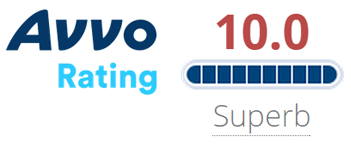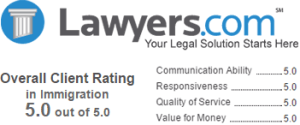Shusterman’s Immigration Update March 2017
Volume Twenty Two, Number Three
SHUSTERMAN’S  IMMIGRATION UPDATE is the Web’s most popular e-mail newsletter regarding US immigration laws and procedures with over 40,000 subscribers located in more than 150 countries. It is written by a former INS Trial Attorney (1976-82) with over 40 years of experience practicing immigration law.
IMMIGRATION UPDATE is the Web’s most popular e-mail newsletter regarding US immigration laws and procedures with over 40,000 subscribers located in more than 150 countries. It is written by a former INS Trial Attorney (1976-82) with over 40 years of experience practicing immigration law.
Published by the Law Offices of Carl Shusterman, 600 Wilshire Blvd, Suite 1550, Los Angeles, California, 90017. Phone: (213) 623-4592 x0.
Want to keep up to date with the latest changes in immigration laws, procedures, processing times and forms? Subscribe now to our Immigration Newsletter, join the conversation on our Facebook Page, follow our Blog Posts and subscribe to our “How-To” Immigration Videos.
Client Reviews

Professional and Knowledgeable Law Firm
“I’ve had a decade of experience with Mr. Shusterman’s law firm. I used them for my immigration needs from H1 to citizenship. It is safe to say this is one of the most competent, professional and knowledgeable law firms. If there is a firm that can handle any possible immigration case routine or otherwise; then this is it.”
- D. Chen, Phoenix, Arizona
Read More Reviews
Zoom Consultations Available!
Shusterman’s Immigration Update March 2017
TABLE OF CONTENTS:
1. How DHS Plans to Deport Millions from the US
2. New USCIS I-9 Handbook for Employers
3. Ask Mr. Shusterman: How Employers Can Protect Themselves
4. State Department Visa Bulletin for March 2017
5. Immigration Government Processing Times
6. Success Story: Helping an H1-B Worker “Recapture” Her Job
7. Immigration Trivia Quiz: The New Colossus
8. Shusterman’s Upcoming Immigration Seminars
9. Jobs & Green Cards for RNs & MedTechs: Free Legal Help!
10. Winner of Our February 2017 Immigration Trivia Quiz!
NEWS FLASHES:
- Know your Rights with ICE – With reports of increasing instances of arrests by Immigration and Customs Enforcement (ICE) across the US, it is important for immigrants to know their rights. Here is a resource that will help you prepare for an encounter with ICE officers.
- The Immigration Facts that Trump Doesn’t Like – The Federal Government already spends more on immigration enforcement than all other federal law enforcement agencies combined. And that’s just the beginning…
- RAISE Act Would Reduce Legal Immigration by 50% – 2 GOP Senators from southern states with dismal voting records in protecting American workers according to the AFL-CIO have introduced a bill in Congress to cut immigration to the US by 50%. They are promoting their bill as a way to “help raise American workers’ wages by restoring legal immigration levels to their historical norms.” While anti-immigration groups like FAIR and Numbers USA are jubilant, other commentators call their approach flawed. Columnist David Brooks refers to the rationale behind the bill as “The National Death Wish”.
- LA Daily Journal Podcast with Attorney Shusterman – On February 10, the LA Daily Journal interviewed Attorney Shusterman for over one hour regarding how the Trump Presidency is likely to change US immigration policy. Here is how they summarized the interview: “Attorney Carl Shusterman visits this week, to examine the many ways immigration policy has begun and is set to shift during the presidency of Donald Trump. Our conversation covers broad terrain: Middle East immigrants and refugees and Trump’s currently-suspended travel ban; migration from Mexico and Central America and Trump’s border wall; and the president’s plans to restrict legal immigration programs, like NAFTA’s professional visa program or the H-1B visa program.”
- Representative Defends Hispanic Caucus After Dismissal from ICE Meeting – Members of the Congressional Hispanic Caucus (CHC) were outraged after they were barred from a meeting with Thomas Homan, the acting director of US Immigration and Customs Enforcement (ICE). House Speaker Paul Ryan asked CHC members to leave the meeting, which was about the execution of President Trump’s controversial immigration policies. Representative Luis Gutierrez (D-Ill) stated in response: “I expect such dictatorial shenanigans from the Trump administration, but not from competent, compassionate legislators like Speaker Ryan or from legislators like Bob Goodlatte. Do they have earpieces feeding them orders from President Bannon or the others making decisions in the White House?”
- Trumps Immigration Ban Fuels Fear for Young Doctors – President Donald Trump’s executive order on immigration, which sparked protests abroad and in the US, is also raising fears about the impact on international medical graduates vying for training programs at US hospitals, as well as young doctors in training from affected countries who are already working here. Immigration attorney Carl Shusterman is quoted in this article.
- EOIR Memorandum: Case Processing Priorities – EOIR has issued a memo rescinding the February 3, 2016 memorandum entitled “Revised Docketing Practices Relating to Certain EOIR Priority Cases” and the March 24, 2015, memorandum “Docketing Practices Relating to Unaccompanied Children Cases and Adults with Children Released on Alternatives to Detention Cases in Light of New Priorities”. Going forward, EOIR’s case processing priorities will be limited to the following 3 categories of cases: all detained individuals, unaccompanied children in the care and custody of the Office of Refugee Resettlement who do not have a sponsor identified, and individuals who are released from custody on a Rodriguez bond.
- Federal Appeals Court Upholds TRO of Trump’s Travel Ban – On February 9, a 3-Judge panel of the US Court of Appeals for the 9th Circuit unanimously upheld a Temporary Restraining Order on President Trump’s travel ban from 7 predominantly Moslem countries. Rather than appeal the Court’s ruling, the Administration announced that they would rewrite the travel ban.
1. How DHS Plans to Deport Millions from the US

On February 20, the DHS issued a memorandum entitled “Implementing the President’s Border Security and Immigration Enforcement Improvement Policies”.
This memo repeats and clarifies some of President Trump’s signature immigration policies:
- Build a wall on the US-Mexican border
- Hire 10,000 more ICE officers and 5,000 more CBP officers
- Bring back the Secure Communities Program to enlist the aid of state and local law enforcement officers to help ICE detain and deport
- Expand deportation priorities so that nearly everyone except Dreamers with DACA can be arrested and deported
- Greatly expand the number of detention centers and let private companies like the CCA run them
One unanswered question has been “How can President Trump quickly deport millions of immigrants when the Immigration Courts are already facing a 3-year backlog?”
The memo answers this question in two words: “Expedited Removal”.
What is Expedited Removal?
Expedited removal was written into law in 1996, but previous administrations have restricted it’s use.
It allows an immigration agent to order a person removed from the US without the right to a hearing before an Immigration Judge and without the ability to appeal the officer’s ruling.
It has been used almost exclusively at airports, seaports and land borders. If an officer finds that a person is inadmissible (not welcome) in the US because he is ineligible for entry to the US or has made a “material misrepresentation” in order to obtain an immigration benefit, he can be banned for 5 years or even a lifetime from returning to the US without a waiver.
The law provides exceptions to expedited removal for US citizens, lawful permanent residents, persons with parole documents, those who have a “credible fear” of being persecuted if they return to their home country and to persons who have continuously resided in the US for 2 years or more.
While past administrations have chosen to use expedited removal sparingly, the Trump Administration has signaled in this memorandum that it may use expedited removal all across the US to round up and deport tens or hundreds of thousands of immigrants.
What You Can Do to Protect Yourself
Persons arrested by ICE/CBP and subjected to expedited removal are not released on bond. If you have been living in the US for 2 continuous years or more, you are entitled to a hearing before an Immigration Judge. Therefore, it is wise to carry proof of your 2 years of residence in the US. This can be your last 2 years of Federal Income Tax returns or other official records.
If you fear returning to your country because you may be persecuted because of your political opinions, religious beliefs, race, nationality or membership in a particular social group, you need to convince the officer of this. Even if you are ineligible for asylum because you have been living in the US for more that one year, you may still be eligible for withholding of removal or the Convention Against Torture.
You are entitled to a “credible fear interview” (CFI) before an Asylum Officer. If the Asylum Officer finds that you do not have a credible fear, request a CFI before an Immigration Judge.
Since your life in on the line, I recommend that you hire an experienced immigration attorney to help you with your case. You may want to watch our video “Immigration Lawyers: What to Know Before You Hire One”. Be aware that certain states (California, Florida, North Carolina and Texas) have designated a relatively small number of lawyers as Certified Specialists in Immigration and Nationality Law.
2. New USCIS I-9 Handbook for Employers
On February 15, the USCIS published a new Handbook for Employers: Guidance for Completing Form I-9 (M-274). This new 65-page handbook replaces the previous version which was published in 2014. It reflects the changes made in the new I-9 form which was last revised in November 2016 and became mandatory for employers to use on January 22, 2017.
USCIS has also published a 53-page Table of Changes for Revised M-274 which highlights changes between the 2014 and the 2017 handbooks. Note that even the instructions to the new I-9 form have grown to 15 pages.
- Contents of the Handbook
-
- Why Employers Must Verify Employment Authorization and Identity of New Employees
- Completing Form I-9
- Photocopying and Retaining Form I-9
- Unlawful Discrimination and Penalties for Prohibited Practices
- Instructions for Recruiters and Referrers for a Fee
- E-Verify: The Web-Based Verification Companion to Form I-9
- Some Questions You May Have About Form I-9
This section contains 45 questions and answers regarding how to complete Form I-9. Additional questions and answers, including some related to Self Audits, are provided online at USCIS’s I-9 Central.
- Smart I-9 Form
Employers now have the option of using the new computer-friendly I-9 form. This form can be downloaded from uscis.gov and completed on a computer.
The new smart I-9 form includes a number of drop-down menus for dates and places to make completing the form easier.
If either an employer or an employee leaves a field blank or makes a technical error in completing the form, the smart I-9 will let them know.
Most fields which are not completed require the employee or the employer to insert “N/A” meaning “not applicable”.
Employers who choose to use the new smart I-9 form must still print it out. Original signatures are required on the printed form and it must be stored in compliance with I-9 regulations.
If the employer chooses, the paper form can still be used.
- Changes to the I-9 Form
- Validations on certain fields to ensure information is entered correctly. For example, the form will validate the correct number of digits for a Social Security number or an expiration date on an identity document.
- Drop-down lists and calendars.
- Embedded instructions for completing each field.
- Buttons that will allow users to access the instructions electronically, print the form and clear the form to start over.
- Additional spaces to enter multiple preparers and translators. If the employee does not use a preparer or translator to assist in completing section 1, he or she must indicate so on a new check box labeled, “I did not use a preparer or translator.”
- The requirement that workers provide only other last names used in Section 1, rather than all other names used. This is to avoid possible discrimination issues and to protect the privacy of transgender and other individuals who have changed their first names.
- The removal of the requirement that immigrants authorized to work provide both their Form I-94 number and foreign passport information in Section 1.
- A new “Citizenship/Immigration Status” field at the top of section 2.
- A dedicated area to enter additional information that employers are currently required to notate in the margins of the form, such as TPS and OPT
- A quick-response matrix bar code, or QR code, that generates once the form is printed that can be used to streamline enforcement audits.
- Increased Fines for I-9 Violations
Since August 1, 2016, fines for I-9 paperwork violations have nearly doubled. For paperwork violations, the minimum penalty increased from $110 to $216 while the maximum penalty increased from $1,100 to $2,156 per violation.
The fines for unlawful employment of workers who are not authorized to work now range from $539 to $4,313 per worker for a first time violation to over $20,000 per worker for subsequent offenses.
I anticipate that the present Administration will make increased use of I-9 audits.
Bear in mind that employers who are overly enforcement-minded may be fined for unfair immigration-related practices such as document abuse or discrimination on the basis of nationality or citizenship status. Such fines range up to over $17,000 per worker.
- January 17, 2017 Regulations
As we advised employers in our December 2016 newsletter, the DHS issued a 366-page employment-related immigration regulation which became effective on January 17, 2017.
Among other things, the regulation lists 15 categories of people whose Employment Authorization Documents (EADs) will automatically be extended for 180 days as long as they submit timely requests to extend their EADs. However, there are also many categories of EADs which do not qualify for automatic extensions. This regulation is extremely complex and burdensome for employers.
3. Ask Mr. Shusterman : How Employers Can Protect Themselves
The complex new regulations, the elevated fine levels, the new I-9 form, the updated Employers Handbook and the increased attention to immigration from the new Administration all put employers at risk.
- Employers Are Walking a Tightrope
Back in 1986 when employers were first saddled with the burden of completing I-9 forms, a Member of Congress had me and an Immigration Service official present a seminar for local business people regarding the new requirements.
The INS official assured the crowd that completing a short form was a very routine requirement which would not unduly burden HR professionals.
As a former INS prosecutor, I tended to be more skeptical. I warned employers that they were walking a tightrope. If they did not comply with I-9 requirements, they could face fines for paperwork violations and for hiring unauthorized workers. If they “over-complied”, they could be fined for document abuse and discrimination.
Over the years, USCIS requirements for working in the US have grown increasingly complex, and few employers whose I-9s we have reviewed are in full compliance with the law.
Many companies have been forced to pay multi-million dollar fines for hiring unauthorized workers. In 2015, before the fine amounts doubled, a California employer was fined over $600,000 simply for I-9 paperwork violations. Other employers have paid over $100,000 in document abuse and discrimination fines related to I-9s.
- How Your Company Can Survive An I-9 Audit
I-9 forms must be retained for 3 years after an employee is hired, or 1 year after his employment ceases, whichever comes later. As a practical matter, your company may be storing I-9 forms which were completed many years ago.
What if some of the forms for existing employees are defective? Fortunately, DHS rules allow you to correct these, and if you do so before you receive a notice that your I-9 forms are being audited, each mistake that you correct can save you hundreds, or even thousands, of dollars in fines.
Therefore, I recommend that you conduct an internal audit of all your I-9 forms. It is a good idea to hire an experienced immigration attorney to help you. In my experience, the attorney fees that you pay are usually only a small fraction of the potential fines that you will save in the event that you are audited.
Also, there are a lot of free materials online which have the potential to save your company many thousands of dollars.
I strongly recommend Human Resources Managers become familiar with the new USCIS Handbook for Employers. It has a section answering frequently-asked questions which is very helpful.
My short article in Recruiting Trends magazine Can Your Company Survive An I-9 Audit is a good place to start. You may also want to watch my videos on this subject.
The Employers Immigration Guide on our website links to each of the above-referenced materials as well as to I-9 Central (USCIS) and to a variety of other free resources.
Finally, you may want to sign-up for the government’s E-Verify Program. Our law firm did so over a decade ago as did many of our corporate clients. E-Verify is a free Internet-based system which allows employers to verify the eligibility of employees to work in the US. Though E-verify is far from perfect, I expect that it will become mandatory for most employers in the near future.
4. State Department Visa Bulletin for March 2017
EMPLOYMENT CATEGORIES
The worldwide employment-based preference categories all remain current except for EB-3 which advances by 2 months to December 1, 2016.
However, the outlook remains bleak for persons born in India, China and the Philippines due to per-country quotas.
India EB-2 moves ahead by 6 weeks while India EB-3 remains frozen at March 22, 2005.
China EB-2 advances by 4 weeks while China EB-3 jumps forward 5 1/2 months. China EB-5 investors will see their waiting times lengthen to almost 3 years.
Philippines EB-3 moves forward by 5 months to March 15, 2012.
The EB-4 category for persons born in Mexico, El Salvador, Guatemala and Honduras remains frozen.
The following chart tells the story of the EB numbers in detail:
A. APPLICATION FINAL ACTION DATES FOR EMPLOYMENT-BASED PREFERENCE CASES
| World | China | El Salvador, Guatemala, Honduras | India | Mexico | Philippines | |
|---|---|---|---|---|---|---|
| 1st | Current | Current | Current | Current | Current | Current |
| 2nd | Current | 12-15-12 | Current | 6-01-08 | Current | Current |
| 3rd | 12-01-16 | 3-15-14 | 12-01-16 | 3-22-05 | 12-01-16 | 3-15-12 |
| Unskilled | 12-01-16 | 2-01-06 | 12-01-16 | 3-22-05 | 12-01-16 | 3-15-12 |
| 4th | Current | Current | 7-15-15 | Current | 7-15-15 | Current |
| 5th | Current | 5-01-14 | Current | Current | Current | Current |
B. DATES FOR FILING OF EMPLOYMENT-BASED VISA APPLICATIONS– These dates indicate when immigrant applicants can send adjustment of status applications without having to wait for their priority dates to become current.
| World | China | India | Mexico | Philippines | |
|---|---|---|---|---|---|
| 1st | Current | Current | Current | Current | Current |
| 2nd | Current | 3-01-13 | 4-22-09 | Current | Current |
| 3rd | Current | 5-01-14 | 7-01-05 | Current | 9-01-13 |
| Unskilled | Current | 8-01-09 | 7-01-05 | Current | 9-01-13 |
| 4th | Current | Current | Current | Current | Current |
| 5th | Current | 6-15-14 | Current | Current | Current |
FAMILY-BASED CATEGORIES
The family-based categories in the visa bulletin are as follows:

- F-1 Unmarried Adult Sons & Daughters of US Citizens
- F-2A Spouses & Children of LPRs
- F-2B Unmarried Adult Sons & Daughters of LPRs
- F-3 Married Sons & Daughters of US citizens
- F-4 Brothers & Sisters of US Citizens
An applicant’s priority date is the day that the government received the I-130 Petition. For more on family-based visas and how you can shorten your application time, see Attorney Shusterman’s video near the top of this page.
VISA BULLETIN – FAMILY
The worldwide family-based priority dates continue to move slowly forward between 2 and 5 weeks except for the F1 category which sprints ahead by over 3 months.
All of the Philippine categories advance by 2 to 5 weeks except for the F3 category which remains frozen.
For persons born in Mexico, each of the categories inch forward between 1 and 3 weeks.
The F4 category for siblings advances 1 week for persons born in India.
The following charts tell the story in detail:
A. APPLICATION FINAL ACTION DATES FOR FAMILY-SPONSORED PREFERENCE CASES–
| World | China | India | Mexico | Philippines | |
|---|---|---|---|---|---|
| 1st | 6-01-10 | 6-01-10 | 6-01-10 | 5-15-95 | 12-15-05 |
| 2A | 5-08-15 | 5-08-15 | 5-08-15 | 4-22-15 | 5-08-15 |
| 2B | 8-15-10 | 8-15-10 | 8-15-10 | 11-22-95 | 5-01-06 |
| 3rd | 4-22-05 | 4-22-05 | 4-22-05 | 12-22-94 | 9-08-94 |
| 4th | 2-22-04 | 2-22-04 | 7-22-03 | 6-01-97 | 8-01-93 |
B. DATES FOR FILING FAMILY-SPONSORED VISA APPLICATIONS– These dates indicate when immigrant applicants can send adjustment of status applications without having to wait for their priority dates to become current.
| World | China | India | Mexico | Philippines | |
|---|---|---|---|---|---|
| 1st | 1-01-11 | 1-01-11 | 1-01-11 | 6-01-95 | 5-01-06 |
| 2A | 11-22-15 | 11-22-15 | 11-22-15 | 11-22-15 | 11-22-15 |
| 2B | 2-08-11 | 2-08-11 | 2-08-11 | 6-01-96 | 2-01-07 |
| 3rd | 8-22-05 | 8-22-05 | 8-22-05 | 5-01-95 | 1-01-95 |
| 4th | 7-01-04 | 7-01-04 | 5-01-04 | 12-01-97 | 4-01-94 |
5. Immigration Government Processing Times
 We link to the most recent immigration waiting times for each of the four USCIS Service Centers, the National Benefits Center and the Administrative Appeals Office. We also link to the processing times of all of the 83 USCIS District Offices and Sub-offices. We link to the Labor Department’s page entitled “Processing dates for labor certification applications”. Finally, we link to the State Department’s “Visa Wait Times” page.
We link to the most recent immigration waiting times for each of the four USCIS Service Centers, the National Benefits Center and the Administrative Appeals Office. We also link to the processing times of all of the 83 USCIS District Offices and Sub-offices. We link to the Labor Department’s page entitled “Processing dates for labor certification applications”. Finally, we link to the State Department’s “Visa Wait Times” page.
6. Success Story: Helping an H1-B Worker “Recapture” Her Job
In February 2017, Ms. Yoshido’s temporary work visa was going to expire. Originally from Japan, she was on her 6th and final year of her H-1B visa.
She had produced highly valuable work for an American media company and had established herself as integral to their operations. Her employer was enthusiastic about sponsoring her as a permanent resident.
Both Ms. Yoshido and her employer fully anticipated that she would simply receive a visa extension and go on to become a permanent resident without any major hiccups. However, by the time they began the process to make this a reality, they discovered that it was already too late.
In order to extend an employee’s H-1B status past 6 years, an employer should submit a PERM application before the beginning of the 6th year. Not knowing this, Ms. Yoshido’s employer waited to apply for her until a few months before her H-1B status was set to expire.
By the time the situation came to light, it was December of 2016, and it looked as if there was no way Ms. Yoshido’s green card application could be approved before her time ran out. She was told that she would have to return to Japan and await green card approval there.
PERM applications can take up to sixth months to be processed. Suddenly, she stood to lose her job, her income, and her home in the United States. At the same time, the employer stood to lose an essential member of their team.
Desperate to find a way out of this situation, Ms. Yoshido’s employer came to us.
After carefully reviewing her case, a potential solution emerged from an overlooked fact: only those days that are spent inside the United States can be counted towards the six-year H1-B limit. Ms. Yoshido’s passport revealed that she had spent significant time in Japan during the past 6 years—446 days to be exact.
The 446 days that Ms. Yoshido spent outside the US could be “recaptured,” or subtracted from the 6-year period. With those days returned to her, it became obvious that Ms. Yoshido could continue working in the US in H-1B status while her green card application was being processed.
We advised her employer to submit an extension application with documentation of her time spent outside the US using premium processing. Within 3 weeks, the H-1B extension was approved. Ms. Yoshido and her employer were beyond relief when they learned that she was permitted to work for them without substantial interruption.
Instead of losing her job, Ms. Yoshido will continue to work for her employer for another 14 months. However, if she travels abroad, she will have to obtain another H-1B visa in Japan in order to be able to return to the US.
By this summer, we fully anticipate that her PERM application will be approved, and that her priority date will become current for the EB-3 visa category. At this point, she will be eligible to apply for her green card without having to leave the US.
Instead of having to take an extended unpaid leave and potentially lose her job, Ms. Yoshido is set to begin working for her employer as a permanent resident in the near future.
Helpful tip: Ms. Yoshido is one of the fortunate few. In order to avoid having to send an H-1B employee back to their home country, we advise our corporate clients to sponsor foreign-born professionals in the 1st or 2nd year of their employment in the US.
7. Immigration Trivia Quiz:
Quiz Removed.
8. Shusterman’s Upcoming Immigration Seminars
Donald Trump Immigration Webinar
The State Bar of California
March 1, 2017
Time: 12:00-1:00pm
Federal Bar Association
Immigration Law Section
Annual Conference
Denver, CO
May 12, 2017
Time: TBD
9. Jobs & Green Cards for RNs & MedTechs – Legal Help!
Are you a Registered Nurse or a Medical Technologist who is looking for a job in the US?
Our law firm represents over 100 hospitals across the country. And the nurse shortage is coming back.
Our hospitals are in need of hundreds of RNs as well as Medical Technologists and other healthcare professionals. They are looking for both US and foreign-born RNs, and they will pay all of our attorneys’ fees, USCIS filing fees and more!
If you are a foreign nurse or a medical technologist and need a job in the US and the job requires a work visa and/or green card, please do the following:
Send an e-mail message to egarcia@shusterman.com
In your message, please provide the following information:
1. Have you passed the NCLEX exam?
2. Do you have a current RN license in the US? If so, from what state(s)?
3. Have you taken and passed the IELTS or TOEFL exam?
4. Do you have a valid VisaScreen certificate?
5. Do you have any immediate family members accompanying you to the United States (spouse and children)?
6. Have you ever been petitioned by any US sponsor and hold an old priority date? If so, what is your priority date?
7. If you are present in the US, what is your current immigration status?
8. What is your RN background (area of expertise)?
9. What is your country of birth?
10. What is your country of citizenship?
11. What is your phone number?
If you are a CLS, please amend the above questions accordingly.
We will forward your response to our hospitals, and if they are interested, they will contact you. Please do not contact our law firm until after you hear from one of our hospitals.
We look forward to helping you!
10. Winner for February 2017 Immigration Trivia Quiz!
Quiz Removed.
Carl Shusterman
Certified Specialist in Immigration Law, State Bar of California
Immigration and Naturalization Service (INS) Attorney (1976-82)
Member of AILA Board of Governors (1988-97)
Law Offices of Carl Shusterman, 600 Wilshire Blvd., Suite 1550
Los Angeles, CA 90017
Phone: (213) 623-4592 x0, Fax: (213) 623-3720
“The last time we cut immigration, in the 1920s, we were in the middle of a baby boom. Today, fertility rates have plummeted. If the Cotton-Perdue bill became law, the working-age population would shrink, the nation would age and America would decline.”
– David Brooks, Op-Ed Columnist
The National Death Wish
February 24, 2017
Shusterman’s Immigration Update March 2017 – Quick Links
About Us
Back Issues of Our Newsletter
Citizenship
Client Testimonials
EB-5 Investors
Forms Download
Green Cards
Job Search
PERM
Processing Times
Schedule a Legal Consultation
Subscribe to Our Newsletter
Success Stories
Temporary Visas
Visa Bulletin
February 27, 2017








